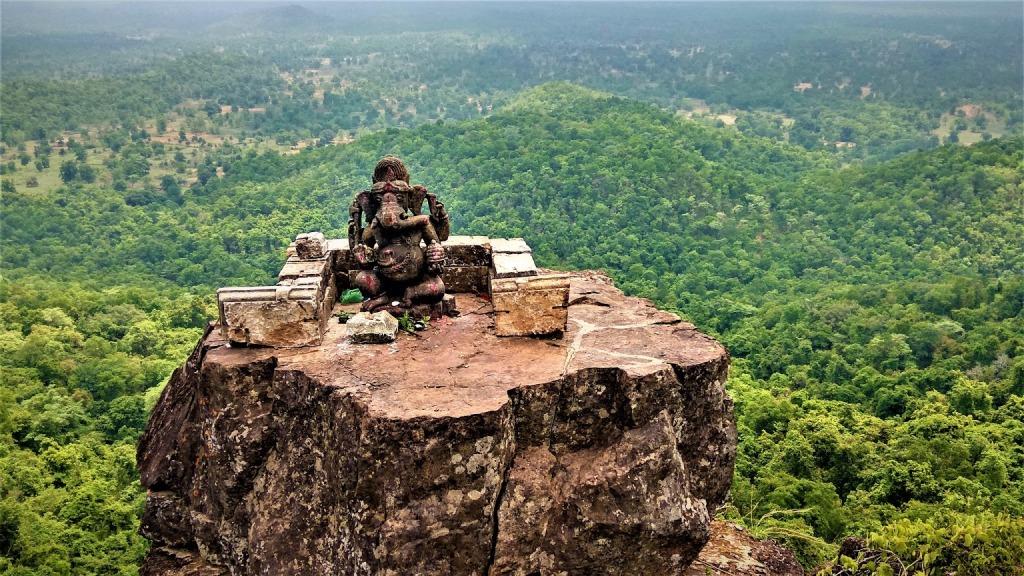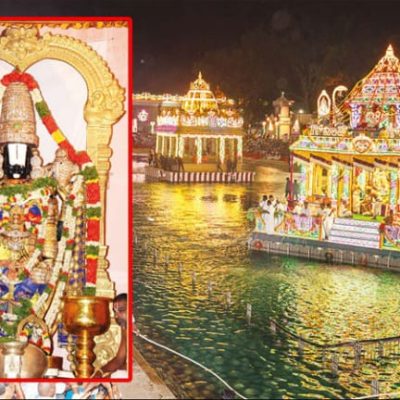Midkulnar Dholkal Ganesh Temple, Chhattisgarh

Address
Midkulnar Dholkal Ganesh Temple, Midkulnar, Chhattisgarh 494449
Diety
Ganesh
Introduction
Dholkal Ganesh Temple is dedicated to the Lord Ganesha located near Dantewada Town in Dantewada District in the Indian state of Chhattisgarh.
Puranic Significance
The stone idol of Lord Ganesha was installed by the kings of Chindaka Nagavanshi dynasty in the 11th century CE.
The local legend associated with Dholkal and Lord Ganesha is a fascinating story from Hindu mythology. Sage Parashurama desired to meet Lord Shiva, but Lord Ganesha, who is the leader of the Ganas (divine attendants of Lord Shiva), initially prevented Parashurama from meeting Lord Shiva. This refusal angered Parashurama, and he attempted to forcefully enter Lord Shiva’s abode. In response, an enraged Lord Ganesha cast Parashurama down to Earth, where he fell in the Bailadila mountain range. When Parashurama regained consciousness, a fierce battle erupted between him and Lord Ganesha. During this battle, Parashurama used his weapon called Farsa (a type of iron weapon) to strike Lord Ganesha, resulting in the removal of one of Lord Ganesha’s teeth. This incident led to Lord Ganesha being known as “Ekdant,” which means “the one with a single tooth.” The village located at the foothills of this mountain range came to be known as Farsapal, named after Parashurama’s weapon. Additionally, it is believed that due to the fall of Parashurama’s Farsa in this region, the Bailadila mountain range became rich in iron ore. In memory of the epic battle between Sage Parashurama and Lord Ganesha, the kings of the Chindaka Nagavanshi dynasty placed a stone idol of Lord Ganesha atop the hill. This idol is situated on a hill on top of a boulder, which has a shape resembling an Indian drum called a “dholak.” As a result, the temple became popularly known as “Dholkal.” This temple holds immense cultural and historical significance due to its association with this ancient legend.
Special Features:
The idol of Dholkal, which had remained hidden for centuries, was reportedly discovered in 1936 by a British geologist named Crookshank during his survey of the region. It is believed that the temple dedicated to Lord Ganesh (Ganesh Temple) and another temple dedicated to Lord Surya (Surya Temple) were found at an elevation of around 3000 feet. The Ganesh Temple originally housed a Ganesh idol, while the Surya Temple had an idol of Lord Surya, although the latter idol was stolen many years ago. However, in January 2017, an unfortunate incident occurred when the Ganesh idol suddenly disappeared. After an investigation, it was found at the bottom of the hill, broken into 56 pieces. Despite a painstaking and hazardous search operation, not all the broken pieces of the idol could be recovered. Later, a team of archaeologists managed to gather all the available pieces and reassemble the idol at its original hilltop location. To this day, the marks of the broken pieces are visible on the idol, serving as a reminder of the efforts made to preserve this significant religious and cultural artifact. The recovery and restoration of the idol are a testament to the reverence and importance placed on Dholkal in the local community and beyond.
The centerpiece of this temple is the Ganesh idol, which stands at approximately 3 feet in height and weighs around 100 kilograms. This remarkable idol has been intricately carved in the shape of a Dholak, a traditional musical instrument commonly used in classical music. The unique form of the idol reflects the hill’s name, “Dholkal,” which was derived from the resemblance of the boulder on which the idol is situated to an Indian drum (Dholak). The idol depicts Lord Ganesha in a lalitasana or easygoing posture, symbolizing His grace and benevolence. With its distinctive shape and rich cultural significance, the Dholkal Ganesh idol has become a prominent and revered religious site in the region, attracting visitors and devotees from far and wide.
Festivals
A special fair is held at this temple in the month of Magha, between January-February
Century/Period/Age
11th century CE
Managed By
Archaeological Survey of India (ASI)
Nearest Bus Station
Dantewada
Nearest Railway Station
Dantewada
Nearest Airport
Raipur





